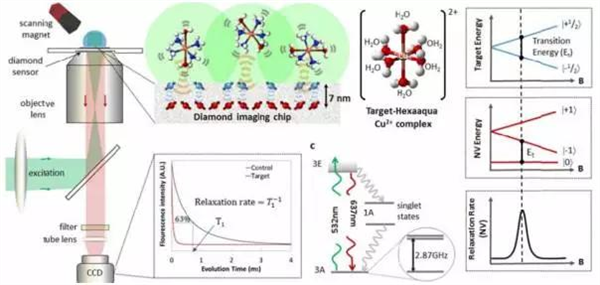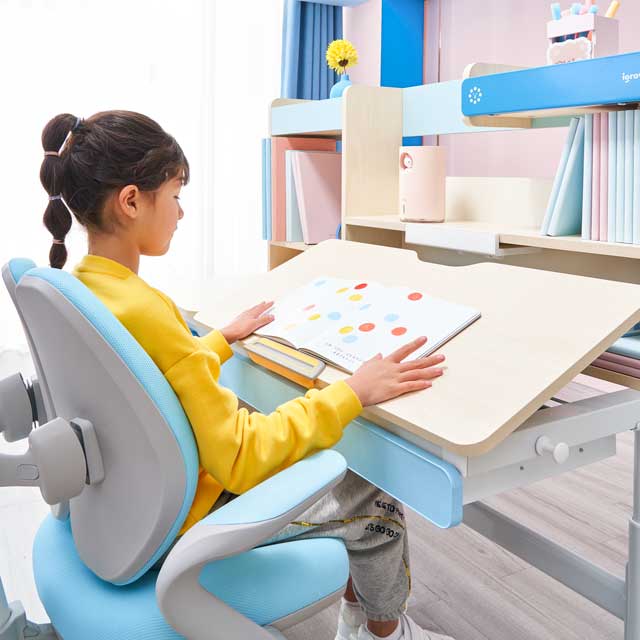Equipped with a detector made of diamonds, this new microscope can be graduated with unprecedented precision.

?
It is no exaggeration to say that magnetic resonance imaging is a miracle of modern medicine. Through harmless magnetic fields and electromagnetic waves, this technology provides doctors with detailed 3D images of the patient's body in a completely non-invasive manner. When the magnetic resonance imaging technique goes further, it can even be used directly to analyze the biochemical components of the patient's body tissues.
This upgraded version of magnetic resonance imaging is called magnetic resonance spectroscopy. For doctors and scientists who need to study the biochemical response of the human body, this technology will become a great tool and help them detect the metabolism of tumors in the patient's muscles or brain.
However, the upgrade brought by magnetic resonance spectroscopy is not perfect. The biggest problem is that its image resolution can only reach 10 microns. In fact, there are many biochemical reactions that are less than this level, for which magnetic resonance spectroscopy is completely powerless.
Therefore, a long-standing desire of doctors and medical researchers is to have a magnetic resonance microscope with sufficient precision to directly observe more subtle biochemical activities.
Today, their wish has come true. David Simpson of the University of Melbourne in Australia and his team succeeded in creating a magnetic resonance microscope with a resolution of up to 300 nm. The biggest secret of this breakthrough is a sensor made of diamonds. . This sensor works like a CCD chip for a digital camera.
In simple terms, MRI works by forcing all nuclei to resonate with a high-intensity magnetic field, in other words, letting them spin in the same direction. When these resonant nuclei are illuminated by electromagnetic waves, they will be excited and release the electromagnetic waves specific to each atom. By analyzing these characteristic electromagnetic waves, we can know the position of each corresponding atom, and get an image.
These characteristic electromagnetic wave signals also tell us the type of chemical bond between these atoms and the biochemical reactions that occur in them. However, the biggest bottleneck in the resolution of this imaging technique is the distance between the electromagnetic wave sensor and the sample.
The Simpson team invented a new technology this time. He used a diamond film to make a magnetic resonance sensor. The real secret is an array of nitrogen atoms buried at 7 nm on the surface of the diamond film. The atomic spacing in the array is 10 nm.
The biggest benefit of implanting this array is that the nitrogen atoms can fluoresce, and the color of the fluorescence is very sensitive to the atoms (which emit characteristic electromagnetic waves) and the electron spins in the vicinity, and the information of these spins just happens to represent the atom. The biochemical environment.
Therefore, all state changes in nearby atoms will change the color of the fluorescence produced by the matrix of nitrogen atoms on the diamond sensor. All the Simpsons team has to do is observe and record these colorful "fireworks."
In order to test this new technology, the Simpson team tested copper ions of hexahydrate ([Cu(H2O)6]2+) in aqueous solution. In order for metal proteins to absorb copper, there are copper hexahydrate ions present in many related enzymes. However, due to the inability to make direct observations in living organisms, the specific distribution of copper and its role in the signalling of cells has been an unknown mystery.
This problem was solved by the Simpson team's quantum magnetic resonance microscope. At high resolutions, they can display the distribution of divalent copper ions in a few liters (10-18 liters).
The Simpson team said: "Our imaging resolution has reached the diffraction limit (300 nm), and the sensitivity to spin has reached the range of 10 to 20 moles." In addition, this technology can also display Various redox reactions have been carried out by these ions. What's more, all of this can be done in a normal temperature environment.
This invention opened up a whole new path for the future of biochemistry. The Simpson team said: "Our results show that the quantum sensing system can adapt to the changing Brown environment of the 'real' chemical reaction system, and the subsequent (electron) spin environment changes when the ions undergo ligand transformation. â€
The birth of this technology has the potential to subvert human understanding of biological responses. Simpson and his team are also very optimistic about the future of the technology: "The quantum magnetic resonance microscope is the perfect choice for observing the basic biochemical reactions of the nanoscale - for example, the chemisorption and bonding processes that occur near the cell membrane. , or the gold transient ion concentration in the periplasm of prokaryotic cells."
Children's Study Desk and chair set is furniture for children aged 3-18 to learn and write homework. The table has a lot of storage space. The platen is made of solid wood core material. The table board is adjustable, and the table legs can be raised and lowered to meet various needs. A tall child can do homework and draw; the Study Chair is an ergonomic chair that can be adjusted to protect the child's spine. The seat cushion is made of latex, which is very comfortable and will not be tired, so that children can learn healthily and happily.study table and chair, the height of the table and chair can be adjusted according to the height of the child. In addition to the most basic "cushion height" that can be adjusted, the "armrest and back cushions" can also be adjusted according to the child's thigh length and waist height. Adjust so that the child does not sit in the wrong position due to the improper height of the table and chair. And the chair is designed according to children's ergonomics, unlike ordinary chairs that are straight up and down, there is a double-back curve design, which supports the child's back and ensures that the waist and hips fit perfectly with the chair.
Aiguole children's study desk primary school desk can lift the table solid wood writing desk home desk and chair set can help children correct their sitting posture, prevent myopia, and protect the spine!

Study Desk Chair Set,Computer Table For Kids,Kids Art Desk,Modern Kids Table Chair
Igrow Technology Co.,LTD , https://www.aigrowdesks.com